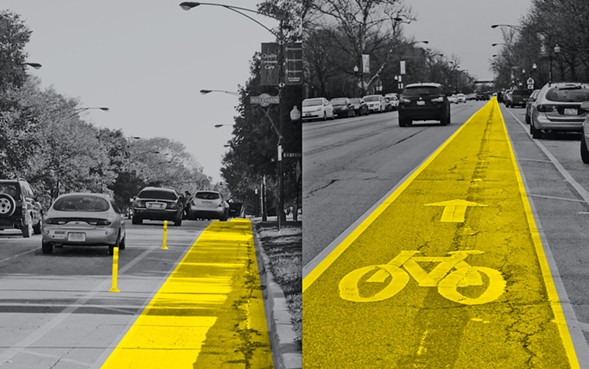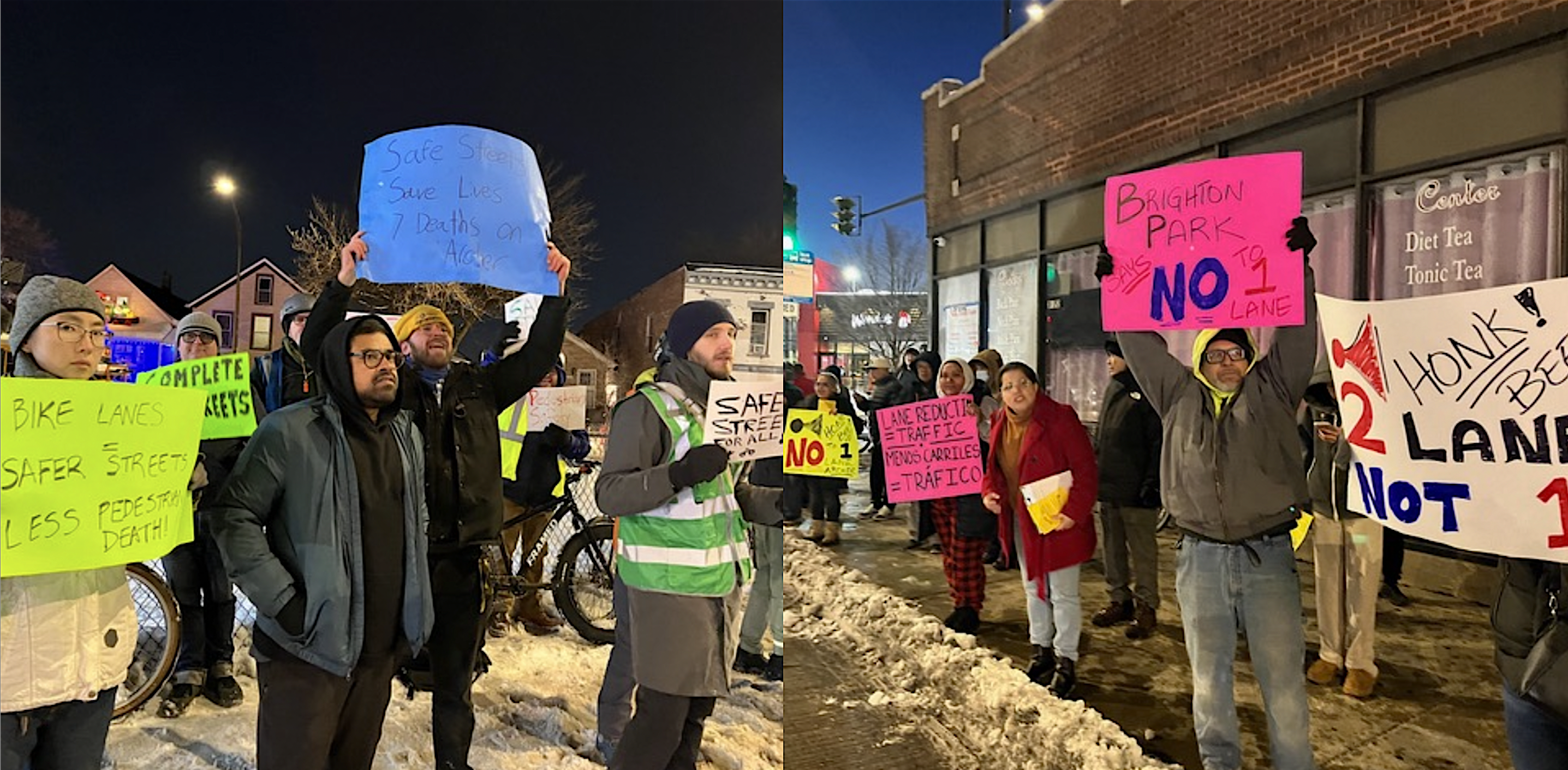[The Chicago Reader publishes a weekly transportation column written by Streetsblog Chicago editor John Greenfield. We syndicate a portion of the column on Streetsblog after it comes out online.]
Mayor Rahm Emanuel likes to brag that Chicago is one of the leading cities for protected bike lanes, with 22 miles installed to date. That figure helped us garner Bicycling magazine's award for America's best biking city last September.
Workers ground out the white thermoplastic lines of the protected bike lanes, which had originally been located next to the curbs, with physical barriers shielding cyclists from moving traffic. Then they redrew the bike lanes closer to the center of the road, with no physical protection from traffic. This allowed for curbside car parking on both sides of the street and created about 30 new parking spaces.
The downgrading of the Marshall bike lanes was done at the request of residents who wanted more spots for cars and had other concerns about the facilities. But as the city strives to build more protected bikeways, this unfortunate episode underscores the need for CDOT to earn community buy-ins before construction and do extensive outreach afterward.
CDOT originally installed the Marshall lanes in November 2012. Previously Marshall had wide travel lanes plus parking on both sides of the street in most sections.
To make room for the bike lanes, about 30 parking spaces were stripped from the east side of the street. On the west side of Marshall, the parking lane was moved to the left of the bike lane so that the parked cars protected cyclists from moving vehicles.
But due to a lack of city outreach about the new configuration, some residents were confused about where to park on the west side of the street and left their cars in the bike lanes rather than in the new parking lane. Worse, CDOT didn't immediately install NO PARKING signs on the east side of the street. As a result, many neighbors didn't realize that it was illegal to park in the northbound bike lane, and many of them were ticketed or even towed.
Dan Korn, a computer programmer who lives at the Hub, a co-op building on Marshall that was founded by bike advocates, and an old acquaintance of mine, says he exchanged several e-mails about the sign problem with then CDOT commissioner Gabe Klein, starting shortly after the bike lanes went in. But the signs weren't replaced until June 2013, about seven months after the fact.
Unsurprisingly, residents gave CDOT staffers an earful at a September 2013 community meeting hosted by 12th Ward alderman George Cardenas. Deputy commissioner Luann Hamilton apologized for the "poor implementation and aggressive ticketing," and said the department would add 74 more public parking spaces by making minor tweaks to the protected bike lane design and removing some permit parking on nearby side streets. (According to CDOT spokesman Mike Claffey, almost all of these spots were later added.)
But in defense of the lanes, Hamilton noted that the "road diet" (as narrowing or removing travel lanes is called) had dramatically reduced speeding on Marshall. Before the protected lanes went in, 59 percent of drivers were exceeding the 30 mph speed limit on the stretch, with 12.5 percent doing over 40 mph-a speed at which pedestrian crashes arealmost always fatal. Afterward, only 27 percent of drivers were speeding, with a mere 1 percent breaking 40.
But unfortunately, the CDOT presentation was only in English, and the CDOT staffers didn't speak Spanish. "This kind of thing doesn't help to combat the perception that cycling is a white activity, and that this bike infrastructure is being pushed onto the neighborhood by white outsiders," Korn noted.





